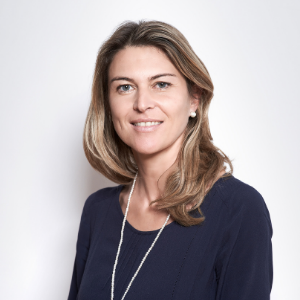“We're talking hundreds, probably thousands of people who have been working together to make these [...] systems so that they're actually ready for prime time”. “Everyone just incrementally added something – including me” [1].
These are the words, respectively, of Pieter Cullis, biochemist and professor at the University of British Columbia (Vancouver, Canada), and of Katalin Karikò, biochemist and researcher, professor at the University of Pennsylvania (UPenn, Philadelphia, USA).
Both contributed to the development of mRNA vaccines, the technology currently in use for the Pfizer-BioNTech and Moderna anti-Covid-19 vaccines, among the safest and most effective ever created.
Cullis is among the perfectioners of lipid nanoparticles, which protect mRNA and allow better absorption of the vaccine into cells, while Karikò helped to demonstrate, together with her colleague Drew Weissman, which chemical modifications to mRNA can make it more stable, bypassing the degradation by the immune system and ensuring an effective immune response.
.jpg?width=800&name=Vaccines_safe_effective_San_Raffaele_University%20(1).jpg)
Illustrative diagram of the essential elements that make up mRNA vaccines. A lipid envelope encloses a messenger RNA molecule that carries the sequence of the SARS-CoV-2 virus Spike protein. In the mRNA molecule, the uridine nitrogen base (U) is replaced by a pseudouridine (ψ). For further information on the composition of mRNA vaccines, read our news.
Not only Cullis, Karikò and Weissman: mRNA vaccines are not the result of the intuition and research of a single or a few names, rather they are the result of decades of studies, of multidisciplinary collaborations, teams of researchers all over the world, who have different backgrounds, skills and approaches, and who have worked together towards a common goal. It is the famous “standing on the shoulders of giants”.
.png?width=800&name=Vaccines_mRNA_composition_perspectives_San_Raffaele_University%20(1).png)
The advantages of working in a team
Each individual is born and raised within significant relationships and with an innate need to belong to social groups: the group, in fact, contributes to the development of the individual's identity and provides rules of behavior.
We speak of a "working group" when in a group each member has a role in the realization of a common goal. In the field of research, many are the advantages of teamwork: the sharing of responsibilities, knowledge and methods, increases the motivation and sense of belonging of the individual, maximizes productivity and the work's scientific impact [2].
.jpg?width=800&name=Vaccines_teamwork_collaboration_San_Raffaele_University%20(1).jpg)
The group offers important alternative perspectives to individual observation, contributing to a broader analysis of reality.
Among the factors that optimize the cooperative climate and group performance are:
- Agreement and clarity of objectives
- Fair division of liability and benefits
- Adequacy of resources
- Tolerance towards error
It should kept in mind that all groups are an expression of the dynamics that derive from the interaction of the people who constitute them and, in particular, of their personalities [3; 4].
Where there is a group there is also a leader and the productivity of the group will also depend on its personal skills and characteristics. Certain personality structures are often functional to the role with the consequent repercussions on relational styles (eg being able to accept different positions with respect to one's own, to share difficult passages, to see others' needs) [5].
.jpg?width=800&name=Vaccines_teamwork_collaboration_San_Raffaele_University%20(3).jpg)
At a clinical level, the literature shows how patient management by a multidisciplinary team leads to better outcomes in terms of care and greater job satisfaction on the part of professionals [6; 7].
Finally, to get used to teamwork, even in university courses is useful the presence of cooperative learning activities such as group presentations and projects, workshops, extra-curricular activities. In addition to a deeper and more lasting understanding of the topics of study, socio-relational skills are fostered, which are essential for activity in the working world.
.jpg?width=800&name=Vaccines_teamwork_collaboration_San_Raffaele_University%20(4).jpg)
References
[1] Dolgin, E., (2021) The tangled history of mRNA vaccines. Nature, 597 (318-324)
[2] Lickel, B., Hamilton, D. L., & Sherman, S. J. (2001). Elements of a lay theory of groups: Types of groups, relational styles, and the perception of group entitativity. Personality and Social Psychology Review, 5(2), 129-140.
[3] Bion, Wilfred R. Esperienze nei gruppi e altri saggi. Armando editore, 1997.
[4] Kernberg, O. (1999). Le relazioni nei gruppi. Ideologia, conflitto e leadership. Raffaello Cortina Editore, Milano.
[5] Di Mattei VE, Perego G., Mazzetti M. (2020) “Il narcisismo nel contesto sanitario” in F. Madeddu (Ed), I Molti volti di Narciso. Raffaello Cortina Editore, Milano.
[6] Hall, K. L., Vogel, A. L., Huang, G. C., Serrano, K. J., Rice, E. L., Tsakraklides, S. P., & Fiore, S. M. (2018). The science of team science: A review of the empirical evidence and research gaps on collaboration in science. American Psychologist, 73, 532–548.
[7] Pillay, B., Wootten, A. C., Crowe, H., Corcoran, N., Tran, B., Bowden, P., Crowe, J., & Costello, A. J. (2016). The impact of multidisciplinary team meetings on patient assessment, management and outcomes in oncology settings: A systematic review of the literature. Cancer Treatment Reviews, 42, 56–72.
.png)

.jpg?width=800&name=Vaccines_safe_effective_San_Raffaele_University%20(1).jpg)
.png?width=800&name=Vaccines_mRNA_composition_perspectives_San_Raffaele_University%20(1).png)
.jpg?width=800&name=Vaccines_teamwork_collaboration_San_Raffaele_University%20(1).jpg)
.jpg?width=800&name=Vaccines_teamwork_collaboration_San_Raffaele_University%20(3).jpg)
.jpg?width=800&name=Vaccines_teamwork_collaboration_San_Raffaele_University%20(4).jpg)